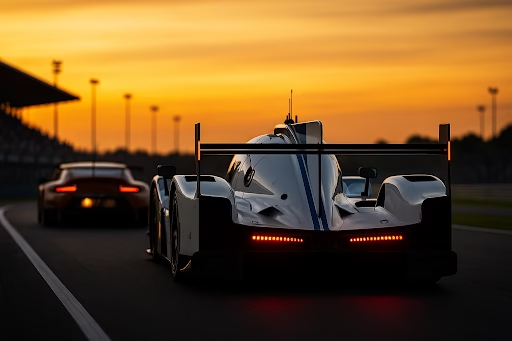Why Endurance Racing Still Captures Global Attention
One of the most exciting forms of motorsport is endurance racing which often runs for long distances. In contrast to the sprint races, events like the 24 Hours of Le Mans test man and machine to the limit, creating memorable drama. Fans worldwide are drawn to the unpredictability, where a single mistake can undo hours of flawless driving. For those who enjoy high-stakes competition, the thrill extends beyond the track—some even seek the same adrenaline at a live dealer baccarat online casino Australia.
The Unmatched Appeal of Long-Distance Racing
Endurance racing is popular because it is like life, which is an endurance race. Events like the Dakar Rally or the Nürburgring 24H require precision in changing conditions, be it scorching heat or black flooding rain. As drivers alternate shifts, mechanics make quick repairs, and engineers adapt plans, the human contribution stands out. It’s about making it to the finish line alive with all limbs in place.
Statistics of endurance racing
Endurance racing is a global sport with a historic rivalry and fascinating technology. The following statistics highlight its enduring popularity and evolution:
- More than a quarter of a million people turned out for the 2023 24 Hours of Le Mans, a 15% increase on 2019.
- The figures for the FIA World Endurance Championship showed 190 million TV viewers in 2022, a rise from 170 million in 2020.
- Furthermore, hybrid and hydrogen-powered cars will run at Le Mans by 2025 and emissions will be cut by 75%.
- The yearly budget of a top-level endurance program of a team exceeds 30 million USD.
- The the participation of female drivers has increased by 40% since 2018, with 12 women competing the in the 2023 WEC season.
How Technology Transforms Endurance Competitions
Endurance racing today is a platform for car innovation. Once in the lab, hybrid systems are now the dominant forces in the top categories as they are getting faster and quicker all the time. Teams use AI-powered analysis to forecast tire wear, fuel consumption, and even rival pit stops. The 2023 Le Mans Winning Toyota GR010 car has a hybrid engine of 680 horsepower that can do 12 laps on a tank. Advances from racing appear in consumer cars, showing how racing drives the future of our cars.
The Human Drama Behind the Wheel
Though machines are quicker, the heart of endurance racing is its people. During their stints, drivers are subjected to an incredible physical ordeal, with cockpit temperatures reaching 50°C and heart rates hitting 170 bpm on average. The team radios convey true feelings of joy and frustration, sometimes even almighty despair as things turn lap after lap. Moments like Alonso’s 2018 victory at Le Mans remind fans of what the sport is truly about – character as much as skill.
Where Tradition Meets Modern Entertainment
Endurance racing continues to initiate new formats for engaging with the younger generation. Online races such as 24 Hours of Le Mans Virtual draw a crowd of sim-racing stars and real pros. Drone videos, live biometric data and fan polls are being shown live. At its core, it’s still a fight against time, weariness, and weather.
The charm of endurance racing is that it has never lost its original character. Through revolutionary technology or timeless human history, it is a popular choice among millions. Fans love this because it’s not just a race. It’s a fast-paced story, in this case at 300 km/h.



